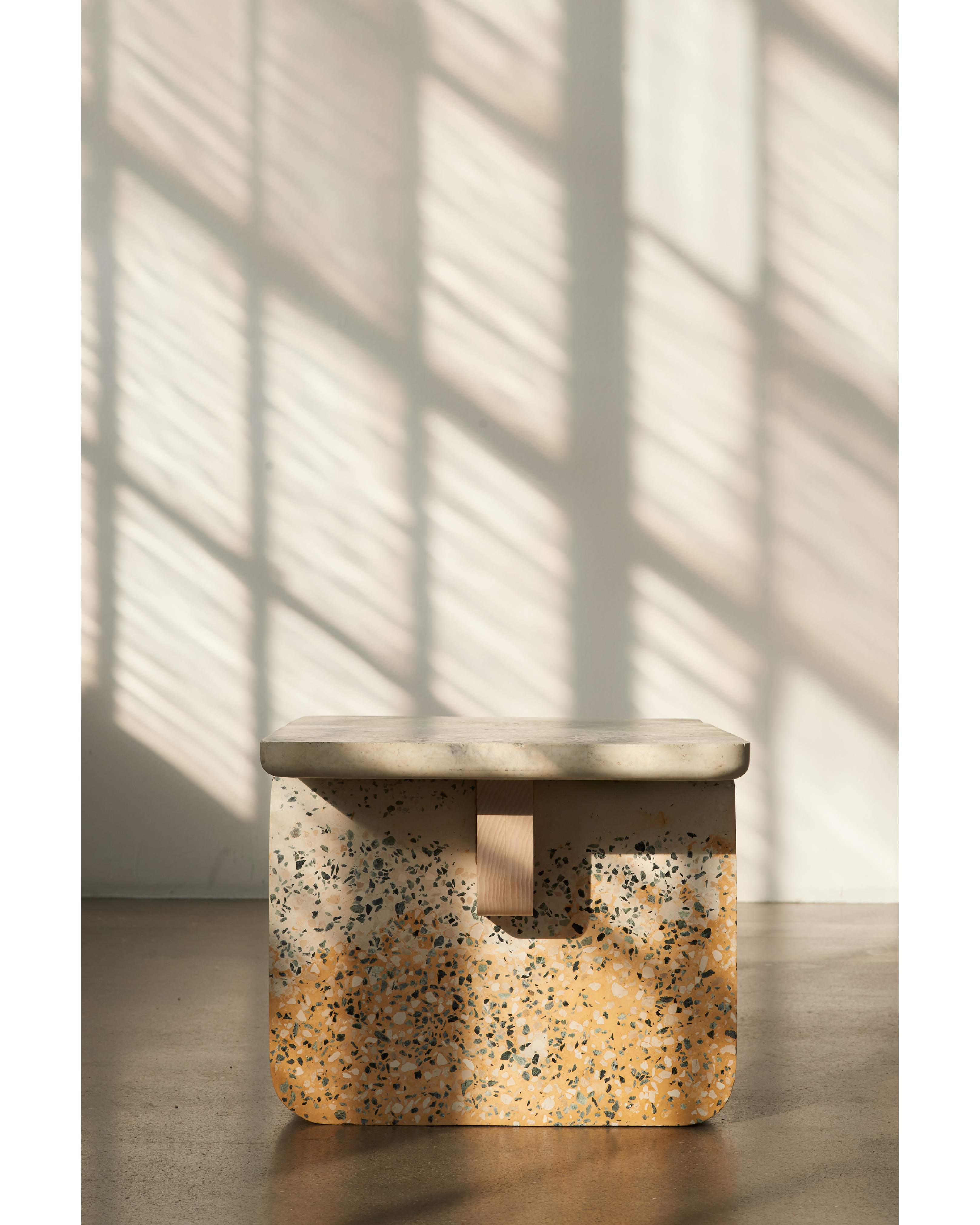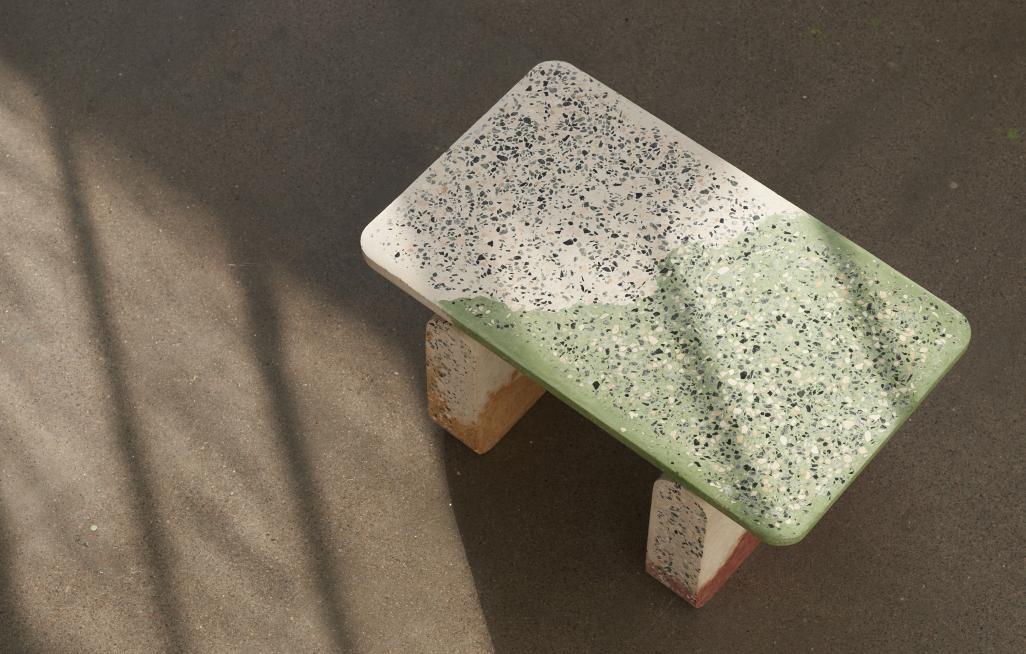
Bachelor 2020
VARDE
Side TableMATERIAL:
Stone
Cement
Pigments
Ash Wood
Marble-flour
Stone
Cement
Pigments
Ash Wood
Marble-flour
BACKGROUND
This project tries to showcase how we can use terrazzo in unconventional ways.
VARDE examines how we work with traditional materials, and how new contexts can change our perceptions about them.
By lifting the ancient flooring-material above ground the material is displayed in a different way, showcasing terrazzo in a new presence where inherent aesthetics, patterns and structures are highlighted and noticed.


CAST METHOD
The table is casted in hand-dyed cement, composed of four different pigmented bases. Poured without dividers, the mix naturally flows together in an uncontrolled playful way. The organic interplay in each element demonstrates this casting method, how the material is transformed from a liquid to a solid state.
The table is casted in hand-dyed cement, composed of four different pigmented bases. Poured without dividers, the mix naturally flows together in an uncontrolled playful way. The organic interplay in each element demonstrates this casting method, how the material is transformed from a liquid to a solid state.

ABOVE GROUND
Consisting of 4 parts, the table is held together by a solid piece of ash wood. Rounded corners help break the heavy expression with soft transitions, in contrast to the hard material.
Instead of using sand, which is one of the main ingredients in traditional terrazzo, VARDE uses marble flour, a by-product of the marble industry, as a sustainable alternative.
The word: VARDE, derives from the Norwegian name of a man-made pile of stones, often known as a cairn.These stone constructions are located at heights in the terrain, often as boundary markers or as markers showing a path.
